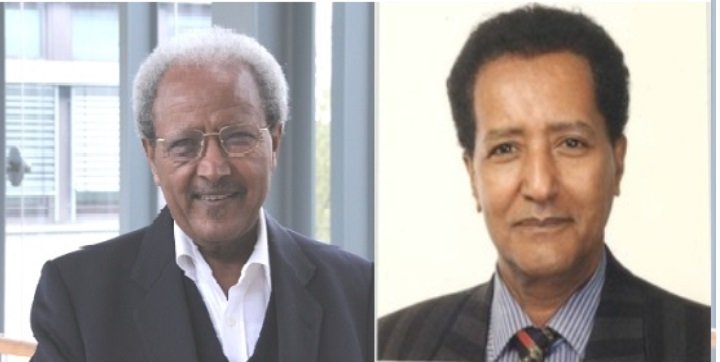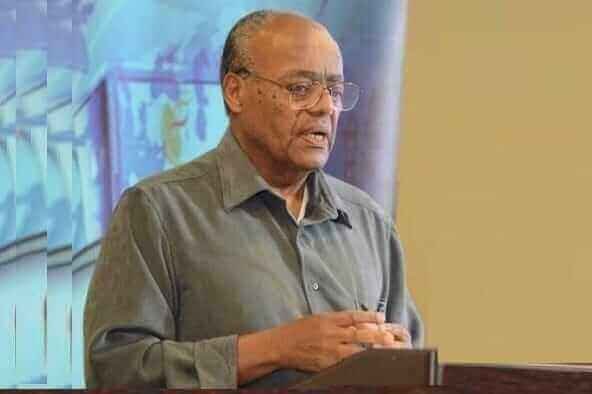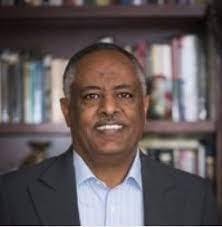
Our direct involvement and observation of the tumultuous Ethiopian student movement during the 1960s culminated as we graduated from college in the late 1960s, yet the fervent struggle persisted through the unwavering commitment of our junior peers. By 1971, the agitation instigated by the University Students Union of Addis Ababa (USUAA) had spread to secondary school students, who staged a strike in solidarity with the embattled university students, catalyzing further student-led boycotts. However, this burgeoning movement was met with vehement suppression by law enforcement authorities, culminating in the effective disbandment of the USUAA by the Board of Governors in 1972, thereby dismantling its central leadership.
Within this discourse, Paulos Milkias and Tesfatsion Medhanie discern the cumulative impact engendered by the conspicuous defiance of, and opposition to, imperial hegemony by the members of USUAA. This impetus provided a conduit for the political enlightenment of the populace at large, as well as the academic cohorts of Addis Ababa and provincial districts, who demonstrated fervent interest in and solidarity with the burgeoning assertiveness of the university students.
When student protests ebbed, ordinary citizens in Ethiopia began to ponder the fate of the university students. They questioned whether the students had succumbed to governmental inducements or relinquished their cause, reflecting their veneration of the students as natural sentinels against unjust treatment and the denial of liberties and entitlements. It is within this contextual framework that we posit the Ethiopian Student Movement (ESM) as the conduit for articulating the grievances and aspirations of the masses, epitomizing the sole outlet for popular discontent in the absence of political parties. Nevertheless, we must admit that the activism of students at times hinged upon their academic progression within the university milieu.
The prevailing economic and societal despondency, the global energy crisis and overall deprivation, further exacerbated the national malaise. This discontent gradually spread and incited insurrections among military divisions stationed in sensitive locales such as Sidāmo Borena in the south and Eritrea in the north, amalgamating to furnish the intricate backdrop to the revolutionary surge that ultimately swept aside the monarchy and its institutional edifice.
Examining the sequence of events, by March of 1968, student demonstrations against a fashion exhibit showcasing miniskirts precipitated the denouncement of the attire as decadent and antithetical to Ethiopian mores. While forming picket lines and staging protest rallies, USUAA members encountered vehement opposition, leading to a violent confrontation with law enforcement personnel and the subsequent apprehension and incarceration of student leaders, including prominent activists such as Tilahun Gizaw and Ammanuel Gebreyesus.
The detainees were entitled to appear before a court within 48 hours of their apprehension, yet days elapsed without judicial recourse, indicating a transgression of legal protocols by custodial authorities. In response, a cadre of law students organized to petition the High Court in Addis Ababa for a Writ of Habeas Corpus, mandating the presentation of detainees without delay. Despite initial success, subsequent developments thwarted the students’ quest for justice, ultimately culminating in the tragic assassination of Tilahun and his compatriots.
By 1968, the radical ethos permeating the student milieu had begun to resonate in provincial enclaves, precipitating widespread unrest. Criticizing the imposition of new educational fees and perceived inadequacies of educational materials, activists demanded fiscal austerity and challenged lavish embassy expenditures abroad. The reverberations of this mobilization, inclusive for the first time of secondary schools, precipitated the closure of numerous Ethiopian diplomatic missions overseas.
Following the violent demonstrations of 1969, which defied the regime’s tightening grip on freedom of assembly, the Haile Selassie government ordered the closure of all schools, and the incarceration of approximately 5,000 secondary school pupils in three correction centers. The ensuing address by the emperor announced stringent measures to quell student activism, yet these actions failed to stem the tide, with students resorting to hijacking planes and intensifying their opposition to the government, focusing particularly on opposing American influence which they believed supported the status quo.
Despite governmental efforts to suppress student radicals, their resilience persisted, evidenced by their replacement of the University newspaper “News and Views” with the politically charged journal:”Struggle,” and their opposition to the large military Communications Center in Asmara, perceived as a formidable force maintaining Emperor Haile Selassie’s grip on power.
In the latter periods of 1969, the student campaign had proliferated beyond the confines of the capital to encompass colleges and high schools across rural areas. At a pivotal juncture, the University Students Union of Addis Ababa formulated a systematic list of demands, disseminated widely in pamphlets. These demands encompassed a spectrum of grievances, including the restructuring of new school fees, the expulsion of American Peace Corps Volunteers from Ethiopia, and the overhaul of governmental structures and the education system. Additionally, the students criticized the mismanagement of resources, the state of education in Ethiopia, and advocated for law enforcement accountability, specifically demanding trials and punishments for police officers implicated in the use of live ammunition against students during peaceful demonstrations.
The students persisted in their campaign for progressive demands, garnering mounting support from the populace. Enthusiasm among students nationwide burgeoned, culminating in widespread demonstrations, school boycotts, and riots. Consequently, numerous educational institutions were compelled to suspend activities due to the magnitude of the protests.
In a display of resolve, the students staged a series of sit-ins, resulting in 500 arrests and several fatalities at the hands of law enforcement officers. Subsequently, Emperor Haile Selassie, in a televised address, conceded to engage in discussions with the students regarding their demands, albeit concurrently ordering the ban of the radical student paper, Struggle.
By the outset of 1970, the emperor had made partial concessions, including the dismissal of his deputy minister of education and the pardon of some individuals arrested earlier in the year. Despite these conciliatory gestures, attempts to conceal the extensive unrest from international media persisted through heavy censorship of government-owned newspapers and publications. Nonetheless, these subdued concessions failed to quell the agitation, prompting a shift in governmental tactics towards a harsh crackdown characterized by violent suppression of organized demonstrations resulting in incarcerations, tortures, and death.
Amidst the formidable momentum and solidarity characterizing the movement, organizational challenges surfaced within the USUAA. Despite concerted efforts, the union found itself lacking a viable alternative to the existing establishment. Nevertheless, their actions served as catalysts for the burgeoning military insurrections witnessed in Negele, Borena, and the Eritrean battlefronts, ultimately leading to the ascendance of the Derg regime. The government while contending with escalating student dissent, grappled with quelling an Eritrean revolt.
Internally, divisions emerged among USUAA members regarding the strategic utilization of the Eritrean Liberation movement to effect regime change. Notably, conflicting perspectives represented by figures such as Tilahun and Walelign delineated the movement into factions characterized by radical and moderate inclinations. Tilahun Gizaw, the president of USUAA, advocated reassessment of the movement’s strategy and counsel direct violent confrontation, but his tenure was abruptly terminated by his assassination on December 28, 1969, precipitating a series of vicious reprisals. The ensuing crackdown, exemplified by the Imperial Guard’s lethal intervention during a student assembly, heightened tensions and elicited international condemnation. Subsequent manifestations of solidarity emerged globally, with student demonstrations in the United States, Canada, and the Soviet Union.
In the socio-political landscape of Haile Selassie’s Ethiopia, lacking political pluralism, the student movement emerged as the primary force challenging the status quo. Governmental responses to quell dissent encompassed draconian legislation, coercive tactics, and judicial restrictions on civil liberties, resulting in arbitrary detentions and punitive measures against dissenting voices. The culmination of mass closures of educational institutions and the arbitrary detention of thousands of secondary school students underscored the regime’s ruthless repression.
Despite adversities, the student movement exhibited resilience, adapting its tactics to circumvent repression and garner public support. Targeting symbols of privilege and economic disparity, students endeavored to underscore the government’s complicity in perpetuating social inequities. Employing guerrilla tactics, students leveraged public sympathy and precipitated a reduction in essential commodity prices, prompting a re-evaluation of government policies. The symbiotic relationship between the student movement and the nascent military regime eventually eroded due to ideological fissures, culminating in strained relations between the two factions.
The nuanced interventions of Lij Kasa Wolde-Mariam, a figure often maligned in scholarly discourse, played a pivotal role in advocating for student rights and shielding them from undue persecution by government security apparatuses. An illustrative incident from circa 1968, during a ceremony commemorating book donations to the law library by the French Ambassador, underscores Lij Kasa’s adept navigation of the intricate student-government dynamic. By adopting a stance that acknowledged the legitimacy of student grievances while emphasizing adherence to legal frameworks in the exercise of rights, Lij Kasa positioned himself as a mediator, drawing criticism from both student activists and government authorities alike.
The trajectory of Ethiopian student activism, evolving from the political reticence of the 1950s to a more ideologically informed disposition within a decade, represents a transformative paradigm shift. Unlike their counterparts in other African nations, Ethiopian students demonstrated a growing inclination towards ideological engagement, driven by an expanding comprehension of scientific socialist theory. This ideological awakening delineated Ethiopian student activism and laid the groundwork for more assertive and politically charged movements in subsequent years.
The invocation of Antonio Gramsci’s theory of hegemony provides invaluable insights into comprehending the socio-political dynamics of pre-Derg Ethiopia. The hegemonic order perpetuated by Emperor Haile Selassie’s regime, reinforced by coercive state apparatuses and ideological dominance, marginalized the majority populace. However, resistance movements and counter-hegemonic struggles, exemplified by the student movement, catalyzed the eventual demise of the Ethiopian monarchy and the rise of the Derg regime.
Reflecting on the climate of the 1950s, collegiate cohorts within Addis Ababa demonstrated a proclivity towards reformism, evincing a reluctance to engage in political affairs. However, within a decade, particularly with the influx of African students under the Haile Selassie Scholarship, Ethiopian students exhibited a heightened level of advancement and outspokenness. This disparity can be attributed to the residual memory of anti-colonial sentiment prevalent in other African nations—a sentiment predominantly rooted in nationalist fervor rather than ideologically informed anti-imperialism, which subsequently waned. Conversely, Ethiopian students progressively gravitated towards left-wing ideological inclinations, marking significant strides therein.
In response to escalating student agitation, the government enacted new draconian restrictions on all forms of demonstrations, denying freedom of association and assembly except under stringent conditions. Subsequent violent demonstrations in 1969 prompted the closure of all schools, with thousands of secondary school pupils incarcerated under harsh conditions. No doubt despite the emperor’s stringent measures, student activism not only persisted but was in fact tremendously radicalized until in the end it contributed to the downfall of the powers that be.
Remembering the Ethiopian Student Movement: Personal Testimonials from Survivors – Part II




















Thank you dear brothers for telling us what was going on in the student movement of our old country in the 1960’s and 70’s. As I mentioned in my comment in your previous positing, your first hand and on-the-spot account of the movement will play its part to tell the untold. Now you can enjoy your well deserved golden years without feeling any regret for not telling what you know. I’m with you enjoying this sunset part of our Allah blessed life on this good earth.
Blessings to you and your family.
After reading this revealing article by the two brothers, I did some research online about notable people they mentioned in positive note. One of them was the former president of the university they both received their highest education, HSI University. I found out in the article written by one Clint Kelly from SPU that that president of the university they attended, Lij Kasa Wolde-Mariam, was one of the former officials in the emperor’s regime who was murdered by that demon Mengistu. Mengistu did not just kill him but strangled him to death. A man who defended his students was not even spared from commie Mengistu’s killing machine. Now don’t start me with commies. Please don’t!!!!!
The dear writers had done their best to tell the timing and how those young students began to radicalize in the 1960’s. They had told us how the arrival of students from other newly independent African countries played part in the mode of self expression and communication. I’m sure that was only one part that nudged and poked the tender emotion of the students. From what I was told, read and saw myself on one opportune occasion, there was a role some foreign instructors that had roles in injecting the students with thinly veiled leftist ideology. The students didn’t just grab the ideology from the sky. There were foreign instructors who were committed communists before they secured teaching positions at that university. Those were the ones whose communist party lost miserably in arresting political power in their own countries. They had devised a dubious plan to instigate the student during what they called ‘side classes’.
During one occasion when I went home from the Middle East, I stopped by the capital to pay a visit my relative shop owners and a childhood friend who was a college student there. He sneaked me in one of his classes by one foreign instructor. That was in the 1960’s. I could see how that teacher was leading into uncharted territory of radicalizing. One exchange of discussion leading to another, the class turned into condemnation of the regime and call for violence. That commie instructor was just silent enjoying the fruit of his poison.
Some of those foreign instructors have bombarded us with one memoir after another over the last 5 decades. They know almost every radical student of that era . They knew who started leftist groups at later days. They know about the history of armed groups from the Ogaden to Eritrea. They even brag about it telling most of those radicals who embraced Marxism Leninism were their students and try to shed crocodile tears for those who lost their lives. Those young and gullible students lost their lives but these conniving foreign professors have been profiting from the tragedy. For some reasons my two dear brothers did not tell about these foreign commie instructors. That was how the ideal reforming was debunked and replaced by the destructive revolution which cost millions of lives including the cream puff of the crop. The civilized way constructive dialogue was shunned and it’s been all ‘I have to gouge your eyes first before we can talk’. It has been a cancer so malignant that has been eating at the heart of that country and the region except Djibouti.
Again, I profusely thank my two dear brothers for gracing us with their valuable story.